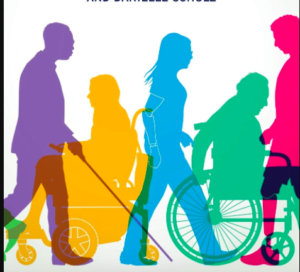As part of our continued work with CripTech Incubator and Sites Unsettled we have been discussing access aesthetics as well as the producing needs of Disabled artists and audiences. Below are a few resources we have used to inform our explorations!
HOW TO PUT ON AN ACCESSIBLE EXHIBITION
This is a modified version of Shape Arts’ resource, “How to Put on an Accessible Exhibition,” originally published on their website. It’s written in a language informed by the Social Model of Disability.
Shape Arts is a disability-led arts organization that works to improve access to culture for disabled people by providing opportunities for disabled artists, training cultural institutions to be more open to disabled people, and through running participatory arts and development programs. With this guide, Shape Arts want to give curators, programmers, and art organizations an overview of how to plan an accessible exhibition.
PRODUCING WITH THE DISABLED LENS
This essay approaches this conversation from the disabled producers perspective. To be successful, cultural productions, including theatre, require the artistic, technical, and administrative staff to have expertise in the areas they desire excellence. If the people who create or experience the work cannot access the production process or space, there’s an immediate barrier to creating or experiencing excellence. Work that does not center justice is centering injustice, which makes for negative artistic outcomes. Practically speaking, it is important for the production teams to have expertise in the areas they want to be successful in. And when it comes to accessibility, disabled artists have the lived experience necessary that will lead to more successful outcomes.
We believe access should be a collective responsibility instead of a sole responsibility placed on a few individuals. We outlined 10 ways to start creating and expanding access and included a list of readings and resources on accessibility & disability justice. We also have clothing, mugs, totes and stickers available at our online store! A different advocacy group will be highlighted every 2 months. Check out the latest group we’re showing-up for with Love, Solidarity, and Disability Justice. For any questions about this project: intersectionalitysummit@gmail.com Include “Access Is Love Project” in the subject line!
MEANINGFUL INCLUSION by Whitney Mashburn and Carmen Papalia
Meaningful inclusion necessitates investment in long-term interpersonal relationships, between artists, institutions, curators, educators, publics and surrounding communities. The interrelationships of the individuals within a space define the accessibility of the place, and these relationships are a product of lasting, intentional care. In the privileged arena of the museum, a radically new order can be created through a series of commitments that transfer value from objects to people, both as audience members and content-creators. Here, we focus on the responsibility of institutions and curators to activate these relationships so that individuals who are marginalized can claim access to cultural platforms.

